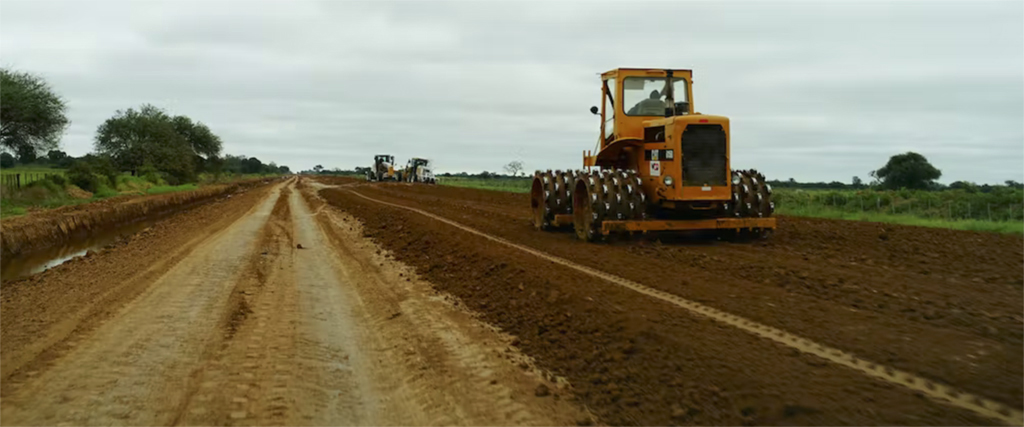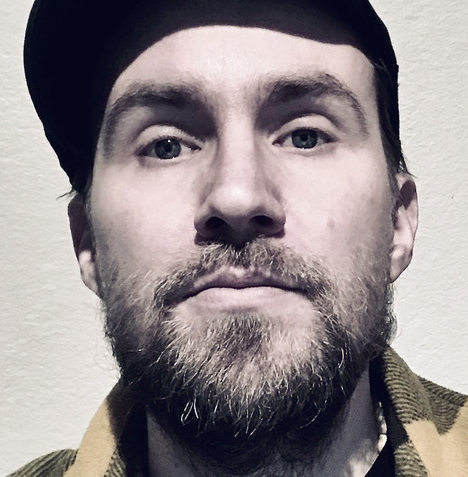
Alongside the Amazon Basin, large portions of Latin America’s carbon dioxide emissions spring out of the Gran Chaco, situated in the heart of South America. For a long time ignored as a desolate and worthless piece of land, a mythical region that Bolivia and Paraguay went to war to fight over, but later became a potent frontier for large-scale soybean production and cattle breeding.
The principal cast in these turns of events is the Mennonites, who settled down in Paraguayan Chaco in the 1920s, and whose conversion from small-scale peasants to influential land speculators and exploiters has brought affliction upon their neighbors, the indigenous Ayoreo.
PARAGUAY | Latin America and the Caribbean ought to reduce their carbon emissions rooted in soybean production and cattle ranching to reach pledged net-zero emissions by 2050, states the Inter-American Development Bank (IADB) in a new report.
It’s about an imploding industrial cocktail consisting of large-scale soy production that provides fodder for expanding livestock farming on lands that were once virgin forests and home to indispensable ecosystems that have turned into savannahs and mono-industrial landscapes.
“Both demand and supply side options need to be mobilized to make the food system consistent with net-zero emissions. Even in the most ambitious scenarios, production emissions are still far from zero. Residual emissions from agriculture, and livestock especially, are unavoidable. To offset emissions, regrowing natural vegetation is essential. This in turn requires reducing demand, especially for beef, and increasing yields, especially pasture yields”, concludes the authors of the IADB report.
In the end, it trickles down to reversing existing structures and trends along the meat bonanza’s bleeding frontiers. The Amazon Basin, in that regard, is a given — as is a sparsely populated, arid, and desolate region situated in the heart of South America and that houses everything from desert-like lunar landscapes to some of the planet’s last uncontacted indigenous tribes outside of the Amazon rainforest.
Bleeding frontiers
It all begins on the other side of the Paraguay River that snakes through the Paraguayan capital, Asunción. El Chaco.
Paraguay’s dominant frontier and the reason for the landlocked country’s ever-climbing position as one the planet’s biggest producers and exporters of soybeans and meat. A development few foresaw a century ago when Paraguayan Chaco endured as an inhospitable no-man’s-land for European colonizers.
“Despite all the interests in Paraguayan Chaco in terms of land and natural resources, the region remains completely overlooked,” Teresa Mayo, Research and Advocacy Officer at Survival International, tells Global.
Green hell, black gold
The word “Chaco” is Quechua and means “hunting ground.” The region was one of the last unmapped territories for European colonizers during their enforced gospel of civilization into “The New World.”
Except for a few Jesuits, who sought contact with indigenous groups during the 1700s, no one paid Paraguayan Chaco that much of an interest. Instead, the region was dismissed as “a green hell” where only pagans and less-than-humans resided — among them the Ayoreo people.
Then, in the 1920s, the map of Paraguayan Chaco was to be redrawn, forever and in every conceivable way. Then the first Russian Mennonites arrived, welcomed by the Paraguayan state which distributed the religious minority with free citizenships and land entitlements.
The settlement was a win-win for both parties. The Mennonites escaped Josef Stalin’s religious persecution and the upcoming Great Terror of the 1930s, while the Paraguayan state found people who were willing to colonize the country’s sparsely populated northern outpost at a time when war drew closer with neighboring Bolivia.
Chaco War 1932–1935
War erupted in September 1932 and was fought in Paraguayan Chaco, a territory claimed by both nations. The driving force was access to land and rumors of vast oil reserves hidden under the soil of the green hell.
Both militaries were backed by European powers, in turn encouraged by oil companies who were hopeful to clinch lucrative trade deals in the event of secured deposits of black gold.
No black gold was ever found in Paraguayan Chaco, however, and when the Chaco War came to an end in 1935, Paraguay had secured control over the territory — all at a huge human cost of 100,000 combating casualties, and over 70,000 civilian dead.
Godly Rulers on Earth
A century ago, they were neighbors in Paraguayan Chaco: the Anabaptist Russian Mennonites and the animistic indigenous tribe of Ayoreo. The former: settled small-scale entrepreneurs, farmers, and ranchers. The latter: nomadic gatherers and hunters.
A century after the first wave of landgrab in Paraguayan Chaco, it’s the immigrants of the first wave who largely control the region’s second land bonanza. Now, the stakes are much higher and small-scale farms have been replaced by huge slaughterhouses and soy fields.
All along the “New Panama Canal,” that is Ruta 9 — also called “Trans-Chaco.” The highway construction cuts through Paraguayan Chaco like a paved scar and slashes through forests before the road finally links northwestern Paraguay with Bolivia and Chile, and later the Pacific Ocean’s wide-open window to a global market.
Paraguay is one of Latin America’s poorest countries, with one of the world’s most unequal distributions of land and capital. Paraguay’s Mennonite minority, however, thrives in their newfound role as land speculators and large-scale cattle ranchers, many still conservatively dressed in their headdresses and grandfather suspenders — a modest first impression that hides a standard of living that puts many Paraguayan Mennonites on the same level as Spain and Portugal.
Lucía is far away from either any global market or any southern European standard of living. Most of all, she is far away from home. In Asunción, many of Paraguay’s remaining members of the Ayoreo people now find themselves stranded after the arrival of soybean plantations and cattle ranching, bringing an industrial storm that cleared their forests and led to internal displacement.
“Authentic Ayoreo,” Lucía promises while glancing down at the displayed pieces of craft.
A rich and inspiring culture summed up on a blanket on a sidewalk in downtown Asunción. The blanket is decorated with earrings, bags, bracelets, and scarves.
Lucia leans against a steel fence that encapsulates one of the Paraguayan capital’s many historic buildings that are still riddled with bullet holes from the War of the Triple Alliance, in the 1860s. Along the traffic-free street and passing Lucía’s blanket, men and women clad in various historical garments march past in a walking summary of Paraguay’s modern history.
The fake blood dried in some of the participants’ faces symbolizes the spilled during the many wars that Paraguay has fought since its independence, in 1811.
In September, 90 years have passed since the outbreak of the Chaco War. Close to a century later, bodies continue to fall to Paraguayan Chaco’s mythical soil as cannon fodder to please external interests. Millions of livestock are slaughtered every year while bulldozers reach ever closer to Chaco’s last virgin forests and home to the last Ayoreo communities.
“It does not matter that there are agreements to preserve land,” laments Teresa Mayo at Survival International. “In 1993, it was decided that land could be assigned to white colonizers, which will lead to more land loss for the Ayoreo people.”
Alongside land grabbing and internal displacement, the Ayoreo language — Pyeta Yovai — is considered “endangered” at the same time as Paraguay risks falling into the black hole of a climate collapse.
“As a country, Paraguay contributes very little to the global crisis, but those who own land bear a great responsibility and has the opportunity to influence the development,” Abel Areco, a human rights lawyer at the human rights organization BASE Investigaciones Sociales, tells Global.
The cards are on the table. In its report, the Inter-American Development Bank underlines that there is no way of rounding the burning issue of demand and supply — nor about consumer choices and producer obligations. A discourse that, at best, might lead to fruitful and visible progress, but, at worst, might end up in a guessing game about the chicken and the egg.
For Lucía and other Ayoreo there isn’t time to wait for concrete solutions or take part in guessing games. Survival is all that’s left.
When the procession of brass bands and theatrical representations of historical events ebbs out, Lucía stores the blanket and the craft in a tiny bag. Then she walks towards Congress where Ayoreo protesters have gathered to demand back their stolen lands. Riot fences prevent them from getting any real glimpse of Paraguay’s innermost chambers of power.
“Nobody listens to them,” sighs a photographer assigned to a TV channel and then takes another bite of his hamburger.
* Lucía is not her real name.


